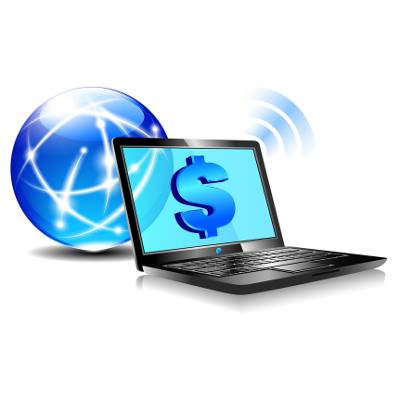USA Computer Services Blog
The Digital Payment War Round 1: PayPal vs. Square Cash
 The Internet has become an extremely efficient shopping tool for consumers. Nearly all available products can be found quickly and easily online. Traditionally, when shoppers settle on what they'd like to purchase, they charge their credit cards, but a new school of digital payment has provided a more secure alternative. How will this affect your business?
The Internet has become an extremely efficient shopping tool for consumers. Nearly all available products can be found quickly and easily online. Traditionally, when shoppers settle on what they'd like to purchase, they charge their credit cards, but a new school of digital payment has provided a more secure alternative. How will this affect your business?
PayPal
Until recently, PayPal has been the dominant digital payment option for consumers who don't wish to expose their credit card information online. It started out as the payment method for eBay auctions, and was eventually bought by eBay in 2002. Since then, PayPal has transformed the way consumers prefer to purchase their goods by acting as a safeguard against the threat of hacked credit card information.
If you're not familiar with how it works, PayPal essentially acts as a financial middleman for consumers. When a buyer purchases an item online, they can opt to pay for it with their PayPal account. Their password protected account is linked with their personal checking account and is authorized to add and remove money and direct where it goes. With PayPal, your money can be safely and securely sent worldwide via any computer, smartphone, or tablet with an Internet connection.
PayPal also offers a few business-specific paid account options that allow companies to offer shopping carts, checkouts, invoices, and more directly from their website. It's easy to see how such an innovation has become a standard in the digital payment realm.
Square Cash
As with any pioneering product or service, fierce competition is sure to follow. Square Cash launched in October of this year and is already shaping to be a competitor worthy of a rivalry with PayPal. Square Cash, a service of Square, allows anyone to transfer money to friends, family, or businesses without an account or password. All it takes is an initial visit to their website to enter your debit card information and associate it with your email address.
All transactions with Square Cash are done through email. Simply email your recipient with a dollar amount in the subject line, and CC: . When the email is sent, your recipient can either reject your money or accept it. If they accept, they are guided through the process of receiving the money into their checking account. It's that simple. Free to use, no account, no password, no service charges; just a simple email (though, there is a smartphone app that makes it even easier!).
The simplicity is so dynamic that our minds immediately gravitate toward the security of Square Cash. After all, if everybody starts making purchases without accounts and passwords, how can they guarantee you won't get hacked? Square Cash declares, "You're safe with us." The safety of your debit card information is dependent on the security of your email account, so you'll want to ensure you're following email security best practices. Otherwise, your transactions are encrypted, so only you can access your financial information. You can also opt to receive text messages after each of your transactions is completed, to ensure you know exactly what money is coming from your account. For now, Square Cash seems safe and secure, with a little extra security effort on the user's end.
Fight!
It seems as though the trustworthy PayPal is up for a bit of competition with the trendy Square Cash system. While PayPal seems more secure and has become a standard, Square Cash may be the easiest and most user-friendly online transaction method ever. As Square Cash grows, it will be interesting to see the impact it has on PayPal. There are other digital payment options that are competing to move your money. In round two we will introduce you to Google Wallet and Coin.
Have you used Square Cash yet? What do you think about it? Let us know in the comments!

Comments